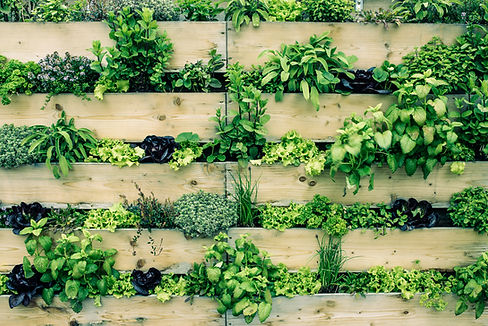HINTS & TIPS
Simple Strategies to Prevent Garden Pests
Pests are a common challenge but that doesn’t mean they need to gain the upper hand. In fact, in most cases there are ways to prevent your crops from getting infested in the first place.
Here, then, are seven simple, savvy strategies to help you prevent garden pests.


1. Grow Resistant Varieties
Our first strategy is to make life easier for yourself by selecting varieties that are known to have some resistance to common pests. Spend a little time researching seed catalogues for suitable varieties to reduce pest problems later on. Look out for carrot-fly-resistant carrots, for example, or seek out potatoes that shake off eelworm attacks.
2. Confuse Pests
Interplant different crops with one another. This confuses passing pests because they will find it harder to home in on their preferred crop.
You can interplant different vegetables, or mix up vegetables with herbs or flowers to create a more diverse – and confusing – planting scheme.
Why not try to confuse them more by growing vegetables with coloured leaves, like purple varieties of cabbage or kale, that insects won’t expect.

3. Plant Outside of Peak Times
Another deceptively simple strategy is grow vegetables outside of the peak times for their pests. Take the example of flea beetles, which chew tiny holes in the leaves of brassicas. Their activity peaks in midsummer.
So grow vegetables such as Asian greens, rocket and mustards in autumn, when fewer beetles are about.
You can also plant before a pest arrives. This works well with fast-growing early peas, helping them to dodge the destructive attention of pea moths.



4. Grow Out of the Way
Physically move vegetables out of harm’s way. Grow carrots and cabbage family crops in pots at least 18in (45cm) above ground, well out of the way of low-flying carrot flies and cabbage root flies. Raised pots also reduce problems with slugs and other soil-dwelling pests.
Starting seedlings off under cover in pots is a reliable way to avoid early setbacks from the likes of pigeons and slugs. By the time they’re transplanted your plants will be bigger, sturdier and more capable of withstanding minor attacks.
5. Use Physical Barriers
Interplant different crops with one another. This confuses passing pests because they will find it harder to home in on their preferred crop.
You can interplant different vegetables, or mix up vegetables with herbs or flowers to create a more diverse – and confusing – planting scheme.
Why not try to confuse them more by growing vegetables with coloured leaves, like purple varieties of cabbage or kale, that insects won’t expect.

7. Keep Plants Healthy
Finally, make sure plants are as healthy as they can be, because strong, healthy plants are less susceptible to pests. Stress-free plants have their own pest defences which more often than not allow them to see off pests without help from us. So grow plants in the right conditions, keep them well fed and water well in dry weather. Don’t forget to feed the soil too – with plenty of well-rotted organic matter such as compost – to promote a thriving root system that supports healthy growth above ground
Credit Benedict Vanheems
Check out more here



6. Attract Beneficial Bugs
Ladybirds, hoverflies, parasitic wasps, lacewings – just a few of the beneficial bugs that help control pests by either eating them or hatching their young inside them.
Tempt more beneficial bugs into your garden by growing lots of the flowers they love, like cosmos, sweet alyssum, dill, yarrow and many more besides. Grow them among or immediately next to your vegetables for maximum impact.
